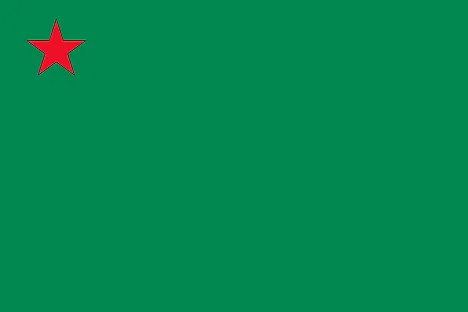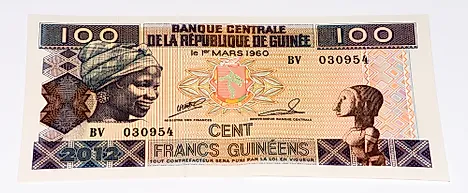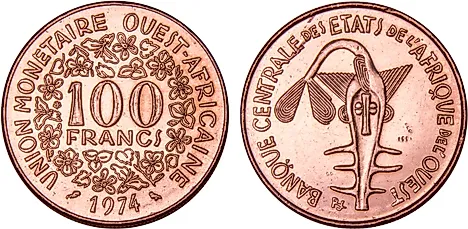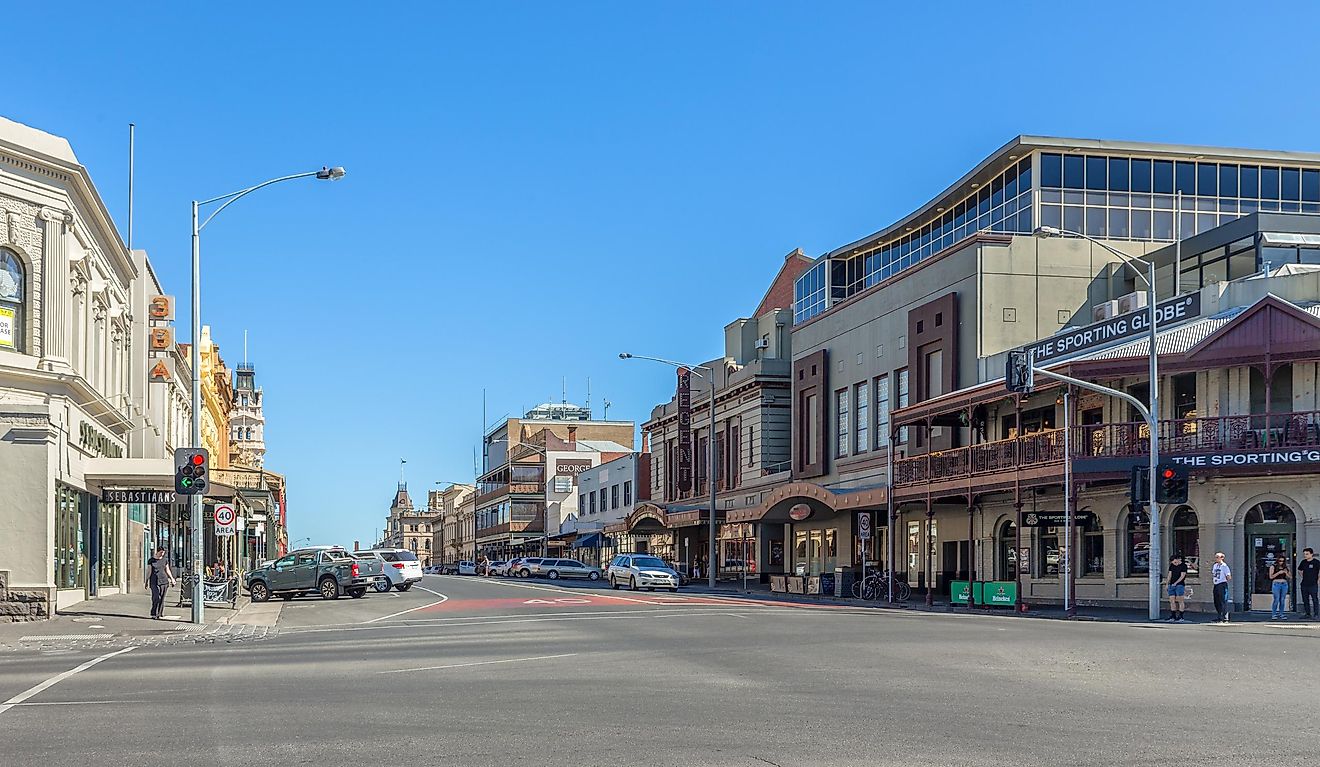Flags, Symbols & Currency of Benin
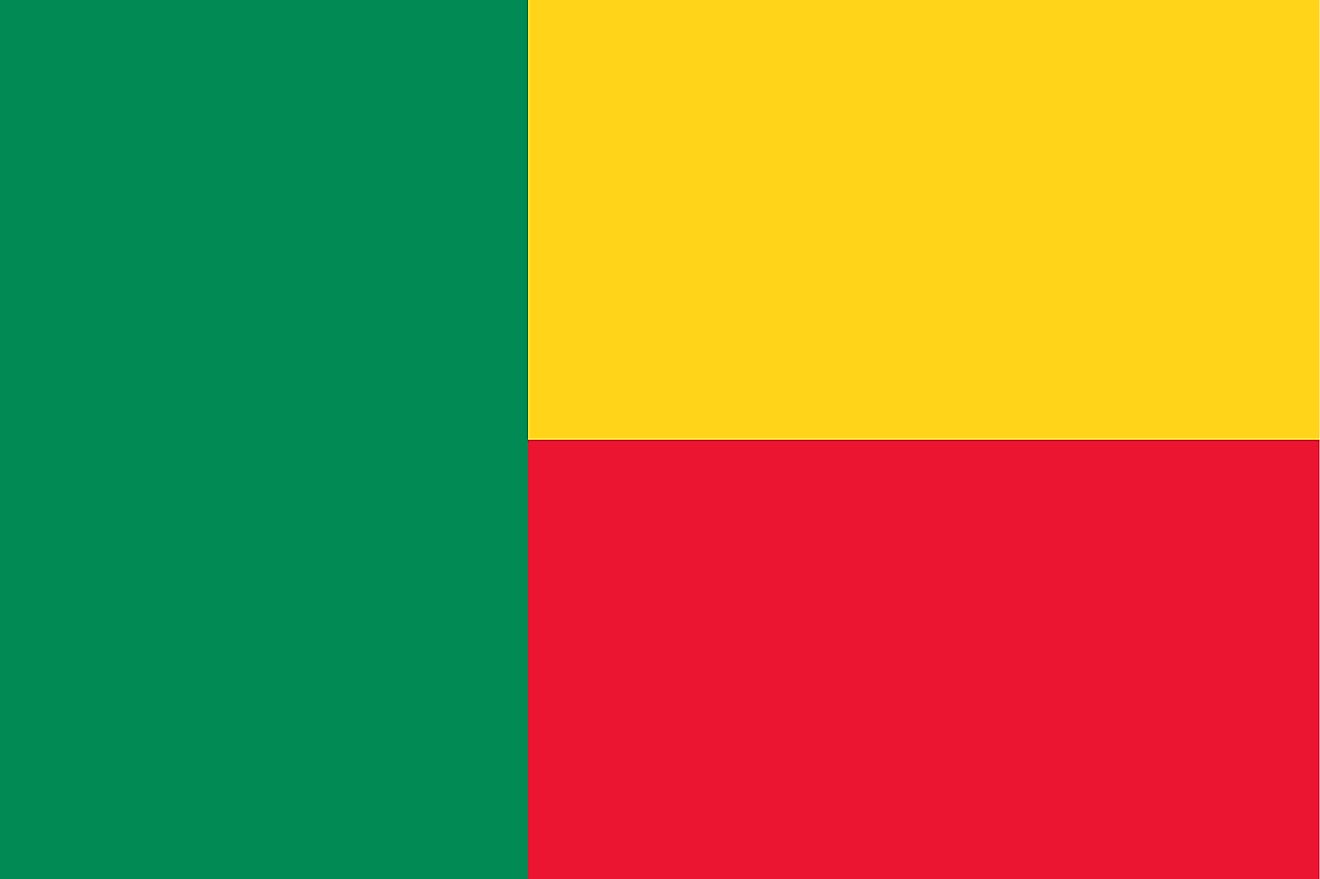
Benin's flag was officially adopted on November 16, 1959 and then re-adopted on August 1, 1990.
The national flag of Benin features two equal horizontal bands of yellow (top) and red (bottom) on the right side with a vertical green band on the hoist side. The flag does not contain any emblems. The yellow color of the flag is a representation of the vast wealth of the mostly equatorial nation that is blessed with an excellent climate and precious minerals. Additionally, yellow also symbolizes the Pan-Africanism movement of the Benin natives, which helped the country gain independence. The red color signifies the courage of ancestors and the blood that was shed during the fight for Dahomey. The green color is a representation of the hope of a new democracy. The yellow and green colors also signify the savanna in the north and groves of palm that are situated in the southern part of Benin, respectively. On a continental level, the colors used on the flag are similar to those on the Ethiopian flag, which has been seen as a way of paying homage to the oldest African country and one of the two that was never colonized by the Europeans. The Benin flag has a height-width proportion ratio of 2:3.
History of the Flag of Benin
Benin was colonized by the French like most West African countries until 1960. During the colonial period, Benin was not allowed to have its own national flag and the French flag was widely used. As the wave of independence swept across the continent of Africa, the French had succumbed to pressure and therefore allowed for the designing of a flag on December 4, 1958. The new flag of Benin, was yellow, red and green, and was adopted on November 16, 1959 and used until 1972, when a new regime came to power through a coup. In a bid to align itself with communist ideals, the new regime had designed a new flag that had a green field and contained a 5-pointed crimson star in the canton.The flag was never officially adopted by the law, and was only used as a substitute. In response to the fall of communism in 1990, the regime in Benin had also collapsed and a new age of democracy was ushered in, and the original yellow, red, and green flag was adopted once again on August 1, 1990 and has been in use ever since.
Symbols of Benin
The National Coat of Arms of Benin
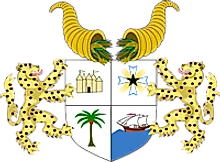
Benin’s coat of arms was originally introduced in 1964. It was replaced in 1975 and was then readopted in 1990. It is composed of two leopards (representative of the national animal of Benin) supporting a shield. The shield is divided into four quadrants: the top left quadrant contains a castle (representative of Benin's history), the top right quadrant features the Star of Benin (the nation’s highest award). Below it is a ship (symbolizing the arrival of the Europeans), and in the bottom left quadrant is a palm tree. Above the shield are two horns filled with corn and sand, which symbolizes prosperity. Below the shield is a ribbon with the motto of Benin ("Fraternite, Justice, Travail") written in French.
National Motto
"Fraternite, Justice, Travail" ("Fraternity, Justice, Labor")
National Anthem
- Anthem Title: "L'Aube Nouvelle" (The Dawn of a New Day)
- Music Composer: Father Gilbert Jean Dagnon
- Lyricist: Father Gilbert Jean Dagnon
- Year of Adoption: 1960
"L'Aube Nouvelle" (The Dawn of a New Day) is the national anthem of Benin. The anthem was written and composed by Father Gilbert Jean Dagnon. It was officially adopted in 1960 upon Benin's independence from France.
"L'Aube Nouvelle" (French)
Jadis à son appel, nos aïeux sans faiblesse
Ont su avec courage, ardeur, pleins d'allégresse
Livrer au prix du sang des combats éclatants.
Accourez vous aussi, bâtisseurs du présent,
Plus forts dans l'unité, chaqu'jour à la tâche,
Pour la postérité, construisez sans relâche.
Refrain:
Enfants du Bénin, debout !
La liberté d'un cri sonore
Chante aux premiers feux de l'aurore;
Enfants du Bénin, debout !
Quand partout souffle un vent de colère et de haine.
Béninois, sois fier, et d'une âme sereine,
Confiant dans l'avenir, regarde ton drapeau !
Dans le vert tu liras l'espor du renouveau,
De tes aïeux le rouge évoque le courage;
Des plus riches trésors le jaune est le présage.
Refrain:
Tes monts ensoleillés, tes palmiers, ta verdure,
Cher Bénin, partout font ta vive parure.
Ton sol offre à chacun la richesse des fruits.
Bénin, désormais que tes fils tous unis
D'un fraternel élan partagent l'espérance
De te voir à jamais heureux dans l'abondance.
Refrain
"The Dawn of a New Day"
Formerly, at her call, our ancestors
Knew how to engage in mighty battles
With strength, courage, ardour, and full of joy, but at the price of blood.
Builders of present, you too, join forces
Each day for the task stronger in unity.
Build without ceasing for posterity.
Chorus:
Children of Benin, arise!
The resounding cry of freedom
Is heard at the first light of dawn,
Children of Benin, arise!
When all around there blows a wind of anger and hate:
Citizen of Benin be proud, and in a calm spirit
Trusting in the future, behold your flag!
In the green you read hope of spring;
The red signifies the courage of your ancestors;
The yellow foretells the greatest treasures.
Chorus:
Beloved Benin, your sunny mountains, palm trees, and green pastures
Show everywhere your brightness;
Your soil offers everyone the richest fruits.
Benin, from henceforth your sons are united
With one brotherly spirit sharing the hope of seeing you
Enjoy abundance and happiness forever.
Chorus
The Currency of Benin is the The West African CFA franc
The West African CFA franc is the official currency used by Benin and seven other nations situated in western Africa. The BCEAO (Banque Centrale des États de l'Afrique de l'Ouest) [The Central Bank of the West African States] issues the currency.
The initials CFA represents the Communauté Financière d'Afrique, a Central Bank situated in Senegal in the city of Dakar. The bank has Monetary Authority. The smallest unit of the franc is 100 centimes, although no centimes denominations have been issued. The Central African CFA franc has the same value as the West African CFA franc. Although the two are not technically intended to be used interchangeably, in practice they are.
Coins
Coins of the West African CFA franc exist in the forms of 1, 5, 10, 25, 50, 100, 200, 250, and 500 francs.
Banknotes
Banknotes of the West African CFA franc exist in the forms of 500, 1000, 2000, 5000, and 10,000 francs.
50-franc banknotes were last issued in 1959, and 100-franc banknotes were last issued in 1965. The 10,000-franc note has existed since 1977.
Historical Currencies of Benin
The franc was first circulated in the countries of West Africa that was under the administration of France in the year 1945 and had replaced the French West African franc. Mali is the only country that did not use the CFA franc upon independence, as they instead began to use their own franc in 1961. It returned to use the CFA Franc BCEAO in 1984.
